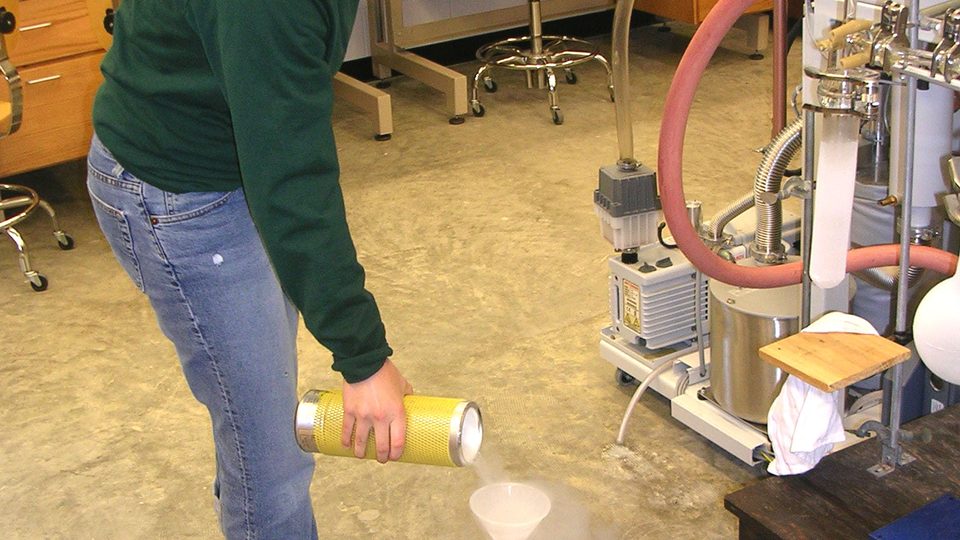Students Participate in Summer Research
At Carleton, the laboratories don’t shut down during the summer. Instead, students and faculty work together on cutting-edge collaborative research.

John Choiniere is explaining the workings of what looks to this writer like a massive and intimidating machine.
“The particle goes through the first and second lasers – that’s how we know how big it is. The third laser kind of blows up the particle and breaks the bonds,” he explains.
Choiniere, a junior chemistry major from Stillwater, Minn., isn’t dressed like a prototypical chemist, with his jeans and unzipped soccer jacket. Even the chemistry laboratory seems atypical – no test tubes or bubbling beakers. Instead, the lab contains only a large machine, an aerosol time-of-flight mass spectrometer. The machine works by measuring the size and composition of particles in order to measure and understand what type of aerosol particles are present in the air.
As one of 15 student chemists on campus this summer, Choiniere is participating in hands-on research with a professor, in his case Deborah Gross, associate professor of chemistry. The goal of his research is to better identify the compounds in the air, and understand the role of aerosol pollution. The machine he uses has been across the country to measure air samples, but today it’s measuring Northfield’s air from a tube set atop the roof of the Olin Hall of Science.
“We’re looking for pollution, nitrates – we see a lot of dead bug parts,” says Choiniere, referring to the samples tested by the machine.
The life of a student researcher is different from that of a student, or even that of a typical student worker. Student researchers are paid a stipend, which often puts researchers under the real-world pressures of a scientist.
“I left the office at 10 p.m. a few days ago,” says Choiniere, “and if I really need to,” – he breaks into a smile – “I can take an hour and a half-long lunch break.”
On this particular day, Choiniere is all business. Nevertheless, he still finds time to step out of the lab to say hello to some other researchers. Two students, senior Anna Larson and junior Admire Kuchina, are engaged in organic synthesis. Next door, senior Sarah Russell is pouring liquid nitrogen from one vessel to another. As Choiniere moves from lab to lab, passing professors and students alike, he becomes enthusiastic about the student-faculty interaction.
“[Carleton] is a really great place to be doing research,” he says, “because you have so much contact with your advisor. [My advisor] is really involved in the process – we have daily meetings, we exchange e-mails. It’s just a really great environment.”